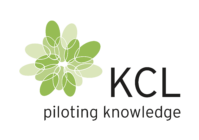Applying a barrier coating involves several critical steps, each contributing to the overall effectiveness and durability of the protective layer. Proper surface preparation, selecting the right materials, and employing the correct application techniques are essential for optimal results. Through expertise and precision, you can ensure that your barrier coating serves its intended purpose effectively.
Why is surface preparation important?
Surface preparation is a crucial first step in the application of a barrier coating. It ensures that the coating adheres properly and performs to its full potential. Without adequate preparation, the coating may fail prematurely, leading to increased maintenance costs and potential damage to the underlying material.
Proper cleaning and priming of the surface remove contaminants such as dust, grease, and previous coatings. This allows for better adhesion and strengthens the bond between the coating and the surface. By investing time in thorough surface preparation, you maximize the effectiveness and longevity of the barrier coating.
How to choose the right barrier coating material?
Selecting the appropriate barrier coating material is vital for ensuring that the coating meets the specific needs of your project. Consider factors such as the type of surface, environmental conditions, and the level of protection required. For instance, a coating for a metal surface exposed to harsh weather conditions will differ from one used on a wooden surface indoors.
Environmental factors, such as temperature fluctuations, humidity, and exposure to chemicals, can affect the performance of the coating. Evaluate these conditions to choose a material that can withstand such challenges while maintaining its protective qualities. Consulting with experts like us at KCL can provide valuable insights into the most suitable materials for your needs.
What are the steps in the application process?
The application process for barrier coatings involves several key steps. Begin by gathering the necessary tools, such as brushes, rollers, or spray equipment, depending on the method of application. Ensure that the surface is thoroughly prepared and primed before applying the coating.
Apply the barrier coating evenly, following the manufacturer’s instructions for thickness and drying times. Multiple coats may be necessary for optimal protection. Allow sufficient drying time between coats to ensure proper adhesion and durability. This process requires precision and patience to achieve the desired protective qualities.
How to ensure quality and durability?
Ensuring the quality and durability of a barrier coating involves regular inspection and maintenance. After application, inspect the coating for any signs of wear or damage. Address any issues promptly to prevent further deterioration and maintain the protective layer’s effectiveness.
Regular maintenance, such as cleaning and reapplication of the coating as needed, can prolong its lifespan. By adhering to best practices in application and upkeep, you can ensure that your barrier coating remains effective over time. Engaging with professional services like those offered by KCL can further enhance the quality and durability of your coating projects.
Conclusion
The successful application of a barrier coating hinges on meticulous surface preparation, informed material selection, and precise application techniques. Each step plays a critical role in ensuring the coating’s effectiveness and longevity. By prioritizing these factors, you can achieve a high-quality protective layer that meets your specific needs.
For professional guidance and comprehensive services in barrier coating applications, consider consulting with us at KCL. Our expertise and commitment to quality can help you navigate the complexities of coating projects and achieve optimal results. Reach out to KCL for tailored solutions that align with your unique requirements in the bioeconomy sector.
